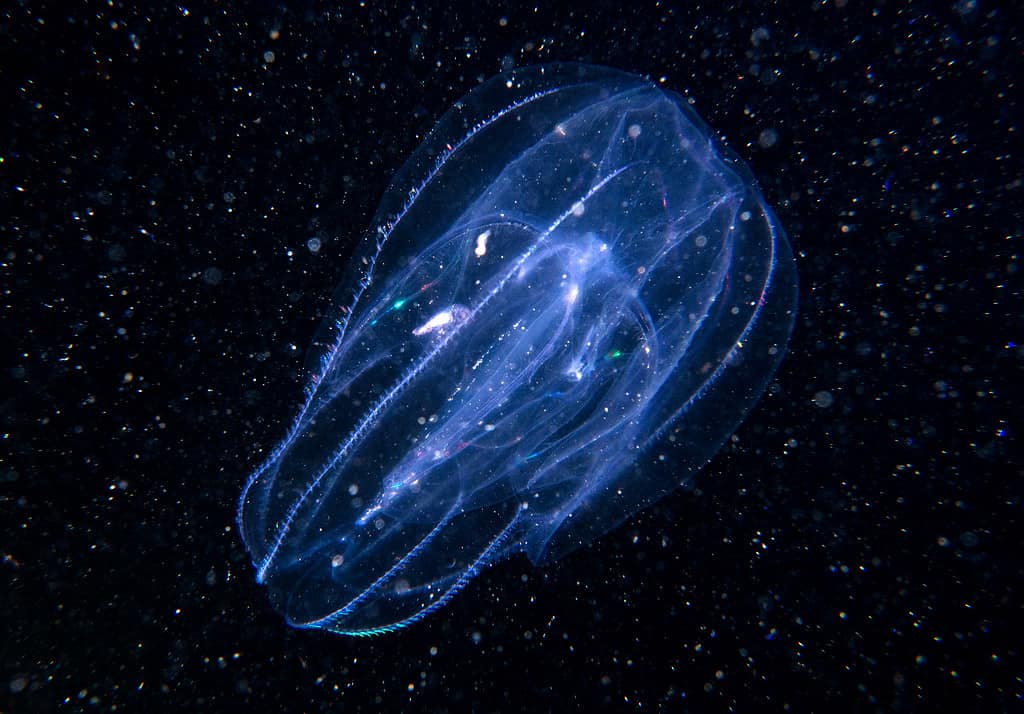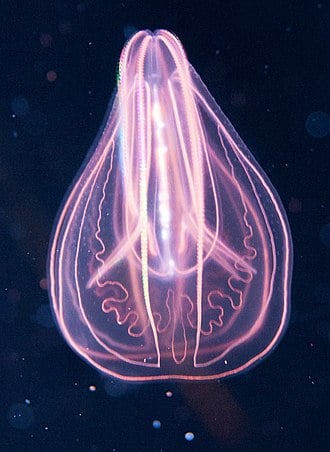Ctenophores, which more commonly go by the name of comb jellies, don’t seem all that special at first glance. But researchers have been fascinated by them for quite some time. For starters, they’re ancient. They evolved during the Cambrian, 540 million years ago, when macroscopic life was just starting to diversify. But more importantly, they’re different from the rest of life on Earth.
Although they look like jellyfish, they’re quite different. Now, a new study suggests that their nervous system may also be different. They don’t seem to have synapses, and their neurons are fused together.

During the Cambrian, evolution went wild. The conditions were ripe for life to start filling the ecosystem niches that were available at the time. It was a time of biological experimentation. Evolution doesn’t “design,” it trials and then what works sticks. Since so much about life on Earth was still new, there was a lot of trialing, and many of the creatures that evolved back then seem outright bizarre now.
Many Cambrian creatures didn’t stand the test of time — but some did.
Sponges are one of the groups that made it and are still around today. Sponges don’t even have a nervous system; or muscles; or vision. But they’ve still managed to thrive for hundreds of millions of years, surviving plenty of extinctions that wiped out other creatures.
Comb jellies are another bizarre group. Superficially, they look like jellies. They don’t have bilateral symmetry, like most creatures today — in other words, they don’t have a symmetrical left and right. They’re also soft-bodied and swim through the seas, propelled by tiny hairs called cilia. But if you look closer, the similarities stop.
Unlike jellyfish, comb jellies don’t have stinging tentacles. They are predators, and they use their arms to catch their prey. They don’t just drift through the oceans, either — they swim. When chased by predators, they can swim faster. They’re pretty alien creatures, a reminder of just how diverse life on Earth can really be.
But now, that alien just got weirder.
Their nervous system is unlike anything that researchers have ever seen before. Commonly, nervous systems rely on tiny gaps between neurons called synapses. These gaps enable communication between neurons to work. But comb jellies don’t have synapses. Their stringy neurons are fused together, sharing a common cell membrane.

It’s such a fundamental difference that researchers believe it’s a different type of nervous system that evolved separately from the rest of the tree of life. It’s kind of like how bats and birds evolved flight separately. In fact, this poses questions about how comb jellies evolved at all.
Previously, it was thought that sponges are the animal that first emerged, because they are rudimentary in so many ways. But this could hint that ctenophores actually emerged even earlier.
If ctenophores did emerge earlier, it could mean that sponges also had similar nervous systems and then devolved them into their current form. The other option would be that ctenophores evolved the nervous system after it diverged from a common ancestor.
To make matters even more complicated, we don’t even know how this nervous system works. There are other animals that have somewhat merged neurons, but nothing like the comb jellies. It gets even weirder: comb jellies also have synapses, but only in some points. So their neurons communicate through synapses in some cases, and through the fused system in others.
Researchers speculate that this could be one of the key secrets to their remarkable regeneration abilities. Comb jellies have both male and female reproductive organs and can fertilize themselves, and if you cut a piece from the organism, a new individual will grow.
But here’s the thing: we’re talking about over 500 million years of evolution. We could be dealing with a mosaic of different adaptations that developed through the eons.
We now see a new piece of the puzzle. But our overall picture is still incomplete and we’re missing a lot of pieces. If we are to understand these creatures, then we need to look in more detail at more species and see how they resemble and differ from one another.
The study was published in Science.


